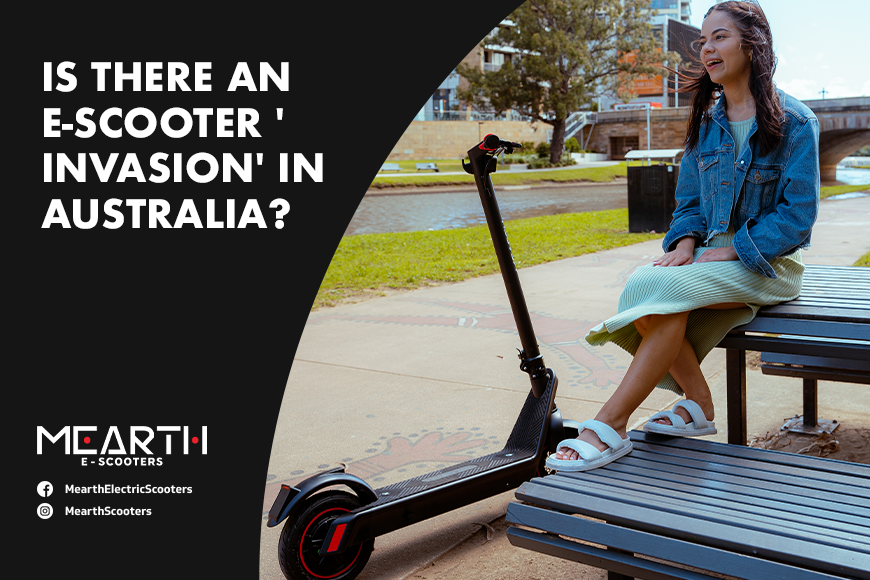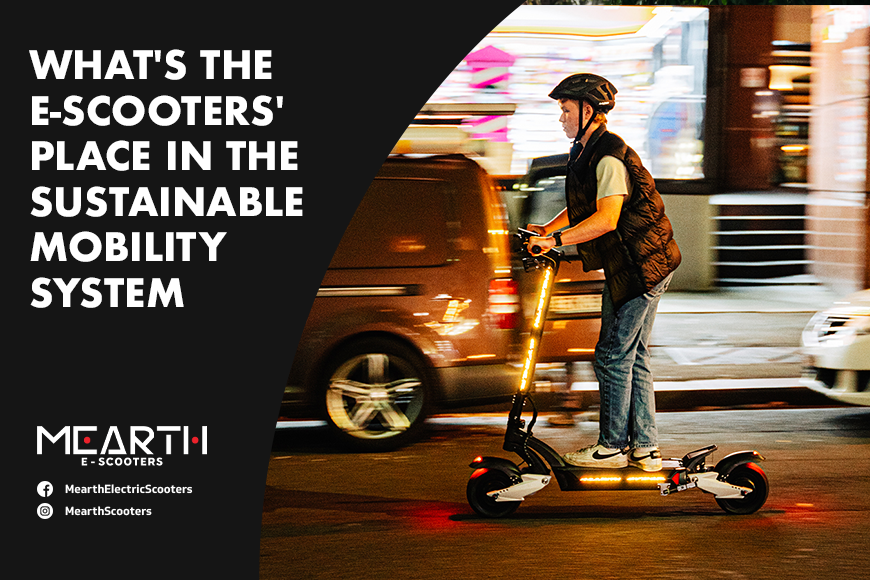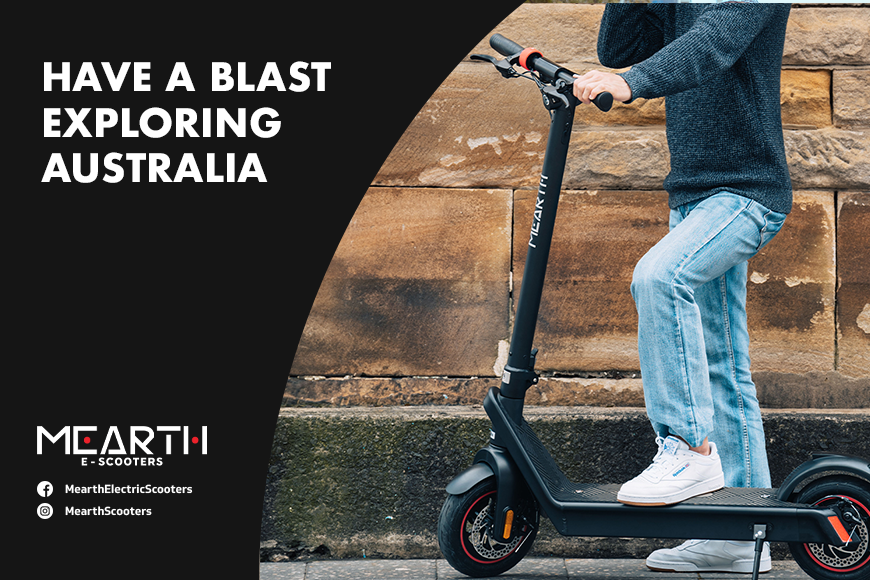
Invasion, you say? Really? Why? How?
Was there really an electric scooter ‘invasion’ in Australia?
This depends on how one would define an invasion. Some might say yes, as electric scooters have become really visible and prevalent in many Australian cities, especially since the launch of rental schemes by operator/companies.
Others might say no, as electric scooters are still subject to different rules and regulations across states and territories, and face some opposition and challenges from pedestrians, authorities, and other road users.
In a report by the Electric Riders Australia, it stated that there were more than 200,000 privately owned e-scooters in Australia in 2022, with an estimated annual growth rate of 20 percent.
According to the Micromobility Report, its industry feedback suggested that more than 250,000 electric scooters and personal mobility devices have been sold and are being used throughout Australia.
Based on these sources, a rough estimate was somewhere between 250,000 and 300,000 electric scooter owners in Australia in 2022.
So there.
The so-called e-scooter 'invasion' in Australia can be seen two ways: the growth of privately owned e-scooters and the emergence of shared e-scooter schemes.
Let us now examine the extent and implications of the e-scooter 'invasion' in Australia, to be able to suggest some possible solutions regarding the issues.
The other aspect of the e-scooter 'invasion' was in the introduction of shared e-scooter schemes, which allow users to rent e-scooters from designated locations using a smartphone app.
The first shared e-scooter scheme in Australia was launched in November 218, by Lime in Brisbane, followed by other operators such as Beam and Neuron in other cities. At present, there are operators that face some regulatory hurdles and public backlash, whereby some councils and residents have complains about safety issues, parking problems, vandalism and littering caused by the e-scooters.
Today's privately owned electric scooters are used mostly for commuting, recreation and delivery services.
However, there are concerns raised about the legal status of privately owned e-scooters which varies across states and territories. There are different rules on where they can be ridden, how fast they can go, what safety equipment they need and whether they need to be registered or licensed.
Queensland, the ACT, Western Australia, and Tasmania allow privately owned e-scooters to be ridden on footpaths and roads with a maximum speed limit of 25 km/h, while Victoria, South Australia and the Northern Territory only allow the personal mobility devices on private property or at selected trial sites -- with a maximum speed limit of 10 km/h.
However, New South Wales is the only state that prohibits privately owned e-scooters on public roads and footpaths.
Sydney and Inner West councils have declined to participate in New South Wales' first trial of a shared e-scooter scheme due to safety concerns for pedestrians.
What are the positive and negative impacts of e-scooter 'invasion' in Australia on society and the environment?
Upfront, e-scooters offer many benefits such as convenience, affordability, accessibility and sustainability. They can help users save time and money by avoiding traffic jams and parking fees. They can also increase mobility options for people who do not have access to cars or public transport, or who have physical disabilities or limitations.
Furthermore, electric scooters help reduce greenhouse gas emissions and air pollution by replacing car trips with zero-emission vehicles that use renewable energy sources.
Contributing to zero emissions, the Mearth S Pro and RS high-performing, premium e-scooters are good for the environment and one’s health.
Powered by an electric motor and a battery that can be recharged, in addition to an extra back up of hot, swappable battery, these electric scooters do not emit any harmful gases or noise that throws in undesirable toxins that contribute to air pollution, further exacerbating climate change.
But –
e-scooters on the other hand were presumed as causing some challenges and risks like safety hazards, legal ambiguity and public nuisance. Often too, they are blamed for the accidents and injuries of users, pedestrians and motorists due to collisions, falling over.
These rideables are also blamed for the confusion and inconsistency created on users and authorities, this, despite the lack of uniform laws and standards across the different states and territories in the country.
Complaints and conflicts among residents have frequently risen due to improper parking, cluttering or discarding of rented e-scooters in public spaces.
But…was the ‘invasion’ successful?
Yes, as many will confirm it to be so. Electric scooters have clearly provided a convenient, cost-effective, viable and environment-friendly option for urban mobility. No contention on that one.
Even shared e-scooters have yielded new business opportunities and jobs for operators, chargers, and mechanics. And yet, there are those who will disagree, as the rented electric scooters have been causing grave safety issues, such as injuries, crashes, and fires.
The shared e-scooters scheme of operators have produced some environmental impacts -- emissions from charging and redistribution operations, and waste from manufacturing and disposal.
Their entry has not been smooth-saling.
Now aware of the positive and negative impacts brought about by the e-scooter ‘invasion’ in Australia, how are we, the electric scooter users, to address the issues arising from such?
Here are possible solutions:
1. The government must have a national framework for regulating e-scooters that harmonizes the rules on where they can be ridden, how fast they can go, what safety equipment they need and whether they need to be registered or licensed.
2. Implement quality control measures for e-scooters that ensure they meet minimum standards for performance, durability, safety and environmental impact.
3. Educate both the users and the public on the benefits and responsibilities of using e-scooters, such as wearing helmets, following traffic rules, respecting pedestrians and parking properly.
4. Encourage collaboration and consultation among stakeholders -- e-scooter operators, users, councils, regulators, transport providers and community groups, to share data, feedback and best practices on e-scooter management and integration.
We have to start somewhere. But all things given, the e-scooter 'invasion' in Australia is one vibrant and groundbreaking phenomenon that have far-reaching impact on people, their lives, the economy, and the environment.
The ‘invasion’ of these 'love-em-or-hate-em' electric scooters is something that has been waiting to happen, and it finally did.
These personal mobility devices also known as electric scooters reflect the changing needs and preferences of urban mobility in our 21st century.
For indeed, e-scooters have the potential to transform the way people travel and live in cities. These convenient and eco-friendly mode of transport are complementing public transport networks.
What needs to be seriously addressed and resolved are the challenges and risks that come with their use.
Foremostly, the laws and standards must ensure quality and safety, as well as painstaking efforts to educate users and the public about the dos and don’ts, the road rules and how to ride an electric scooter responsibly.
Collaborations and consultations among stakeholders must remain active.
In so d ing, Australia will be able to harness the benefits of e-scooters, and cut down the 'stumbling block.'




Leave a comment
This site is protected by hCaptcha and the hCaptcha Privacy Policy and Terms of Service apply.